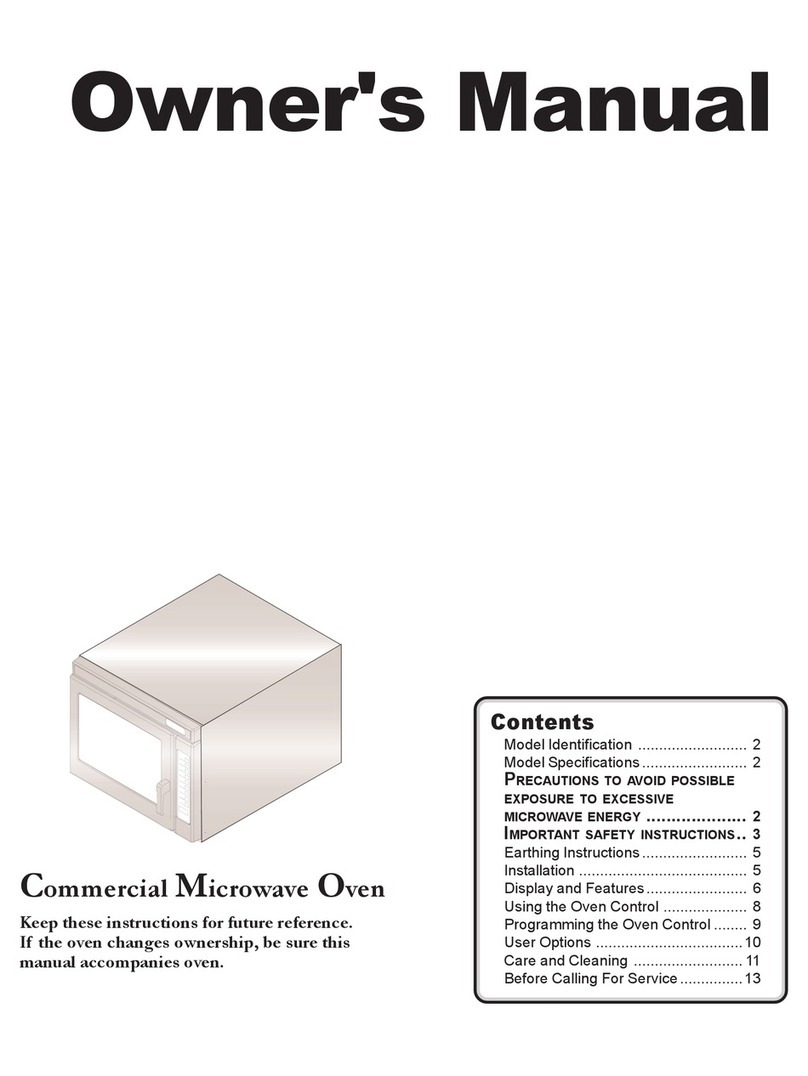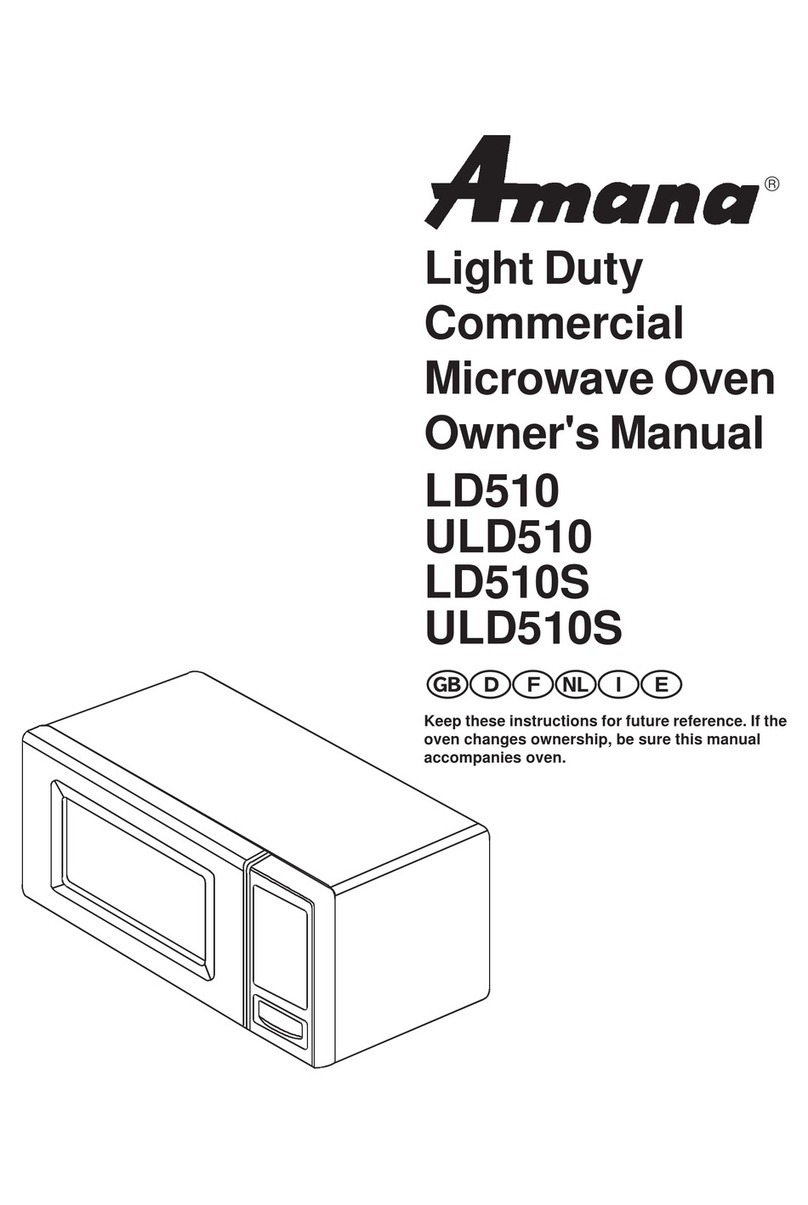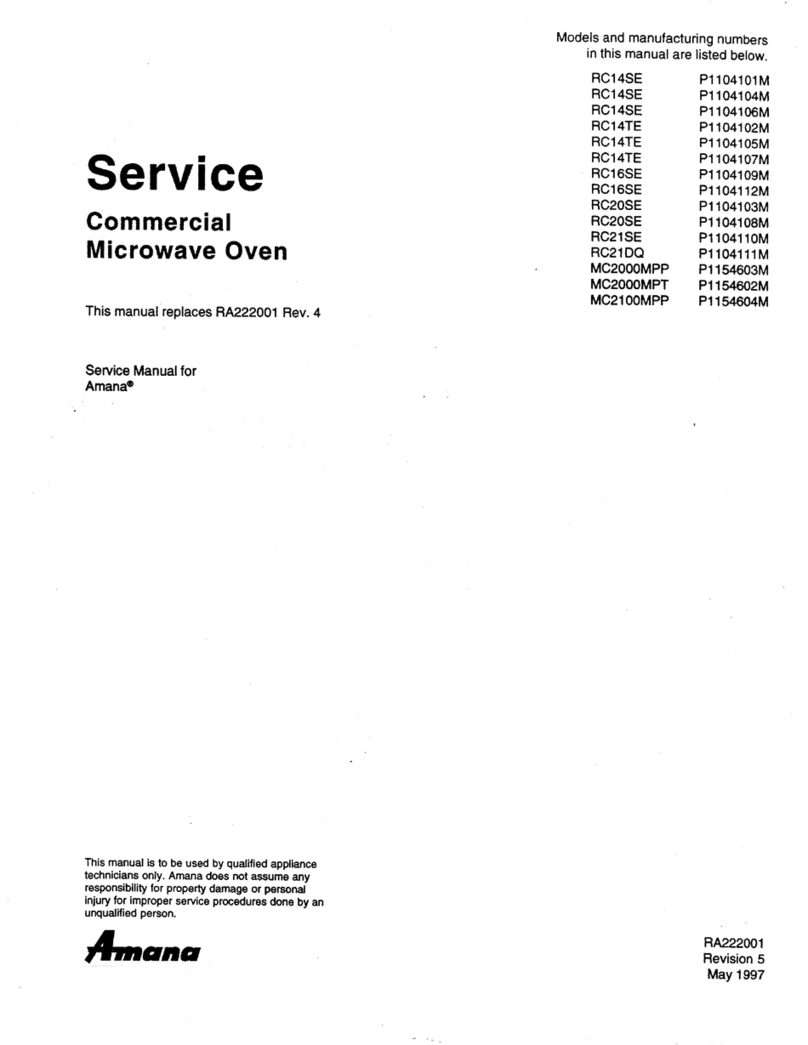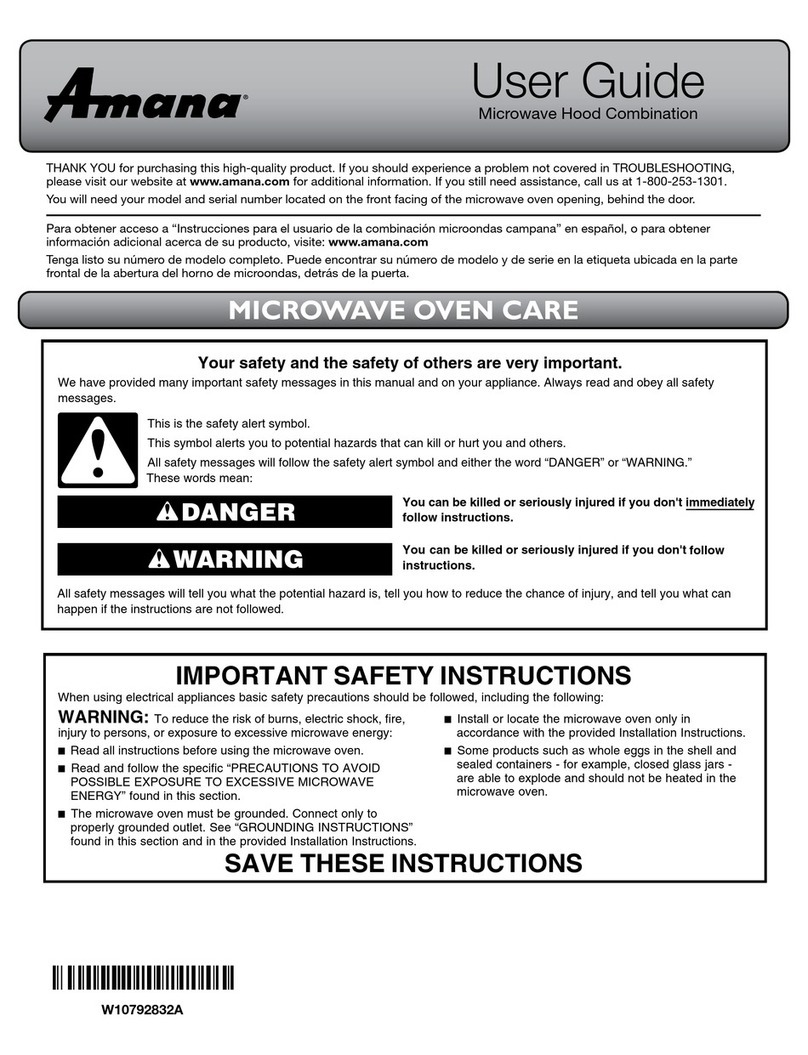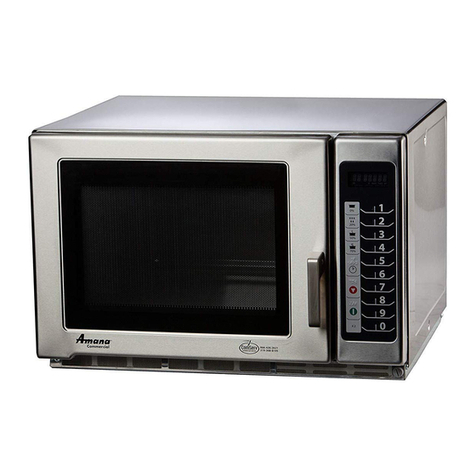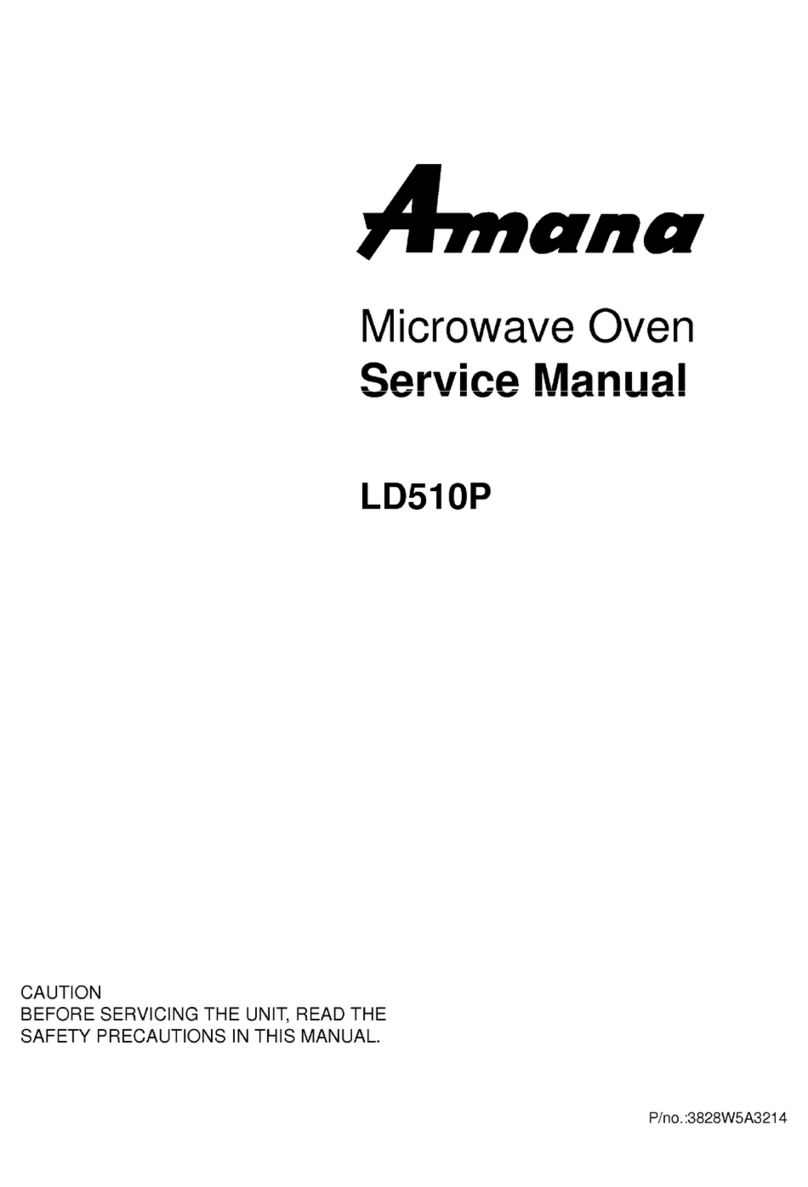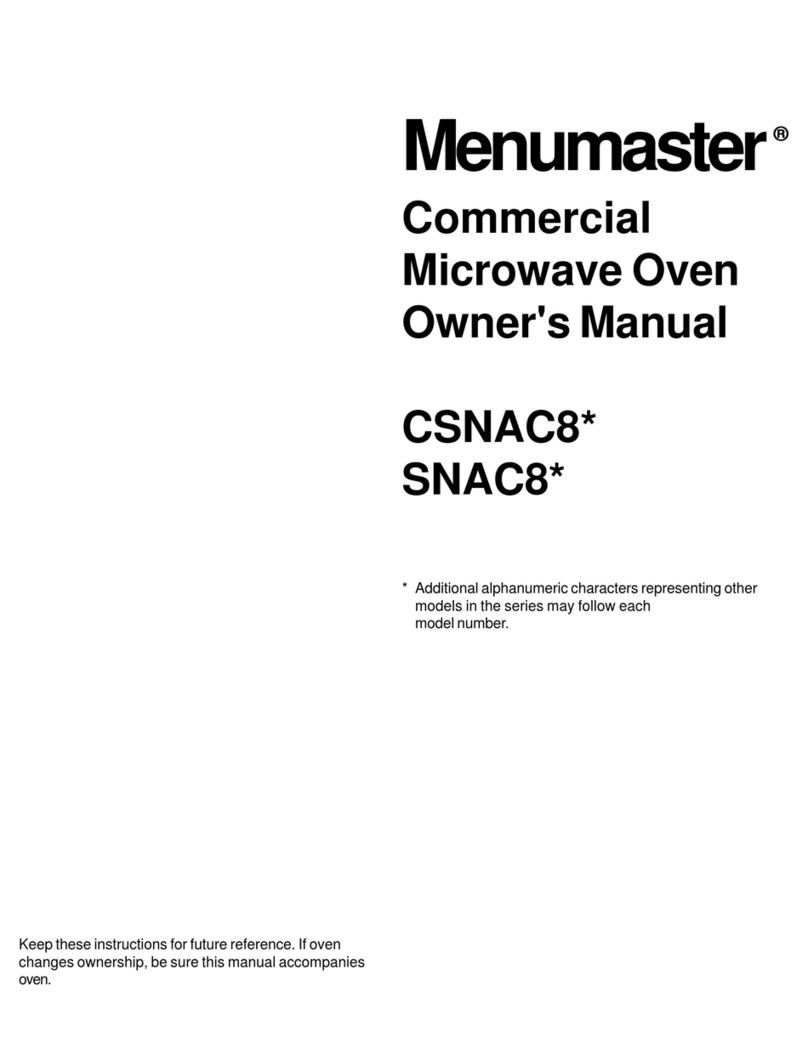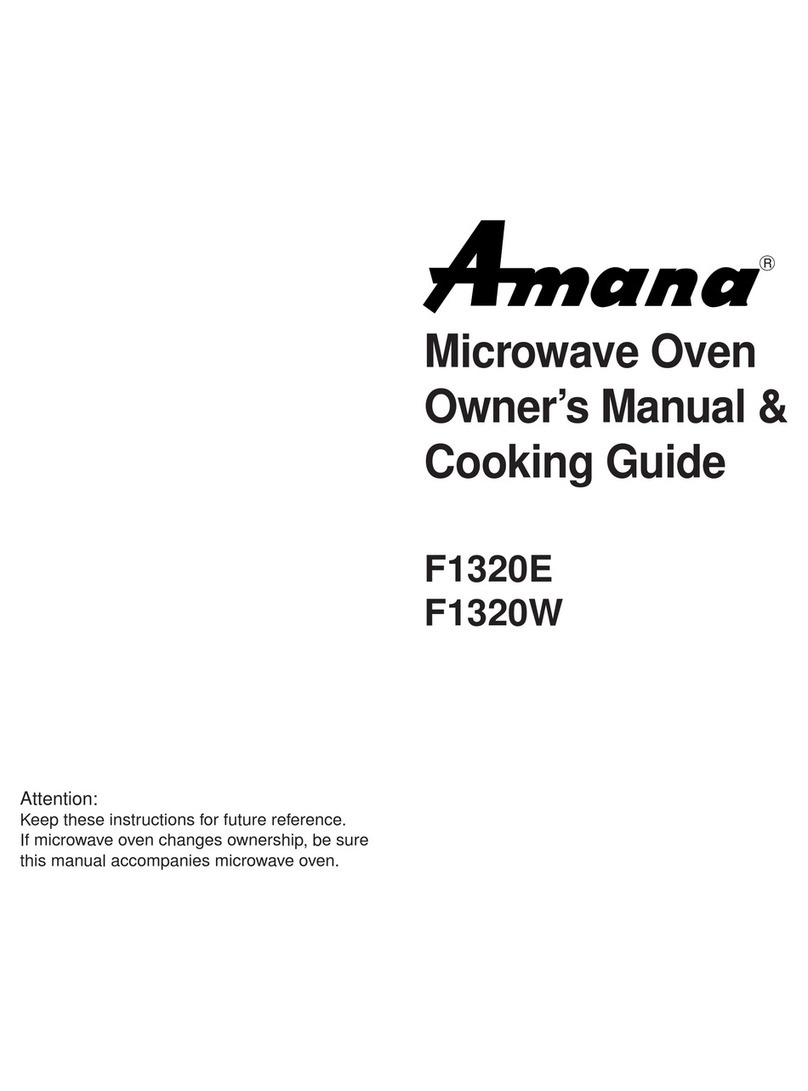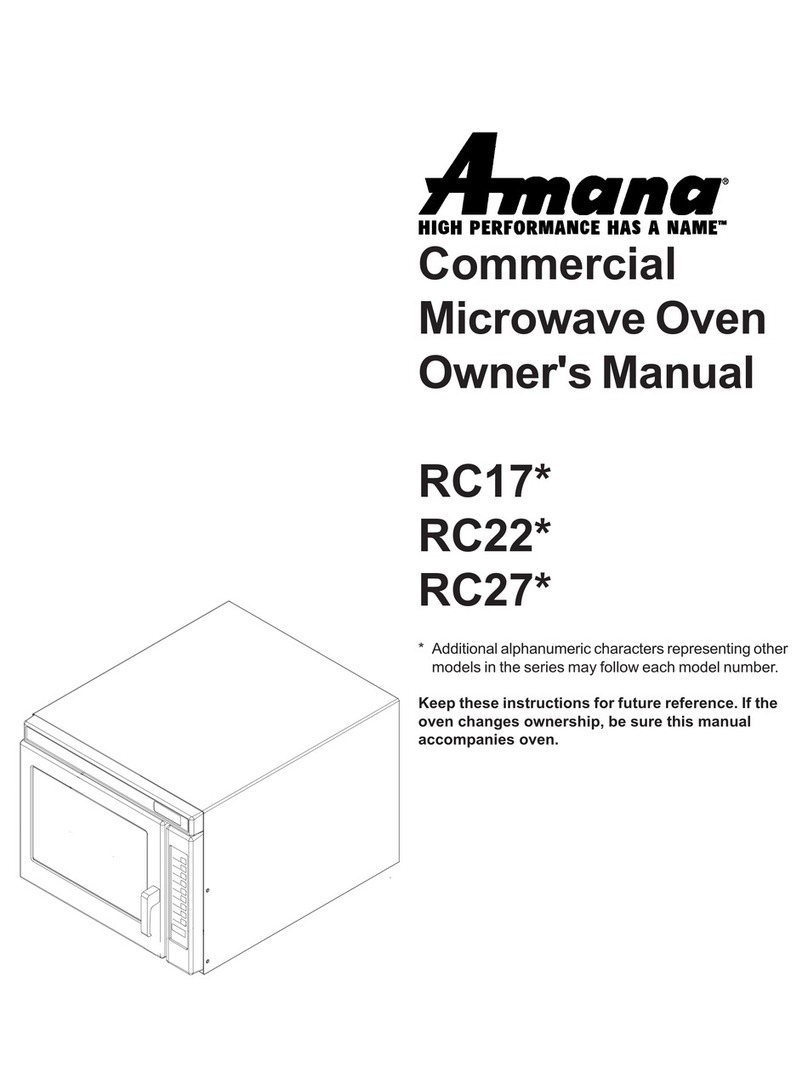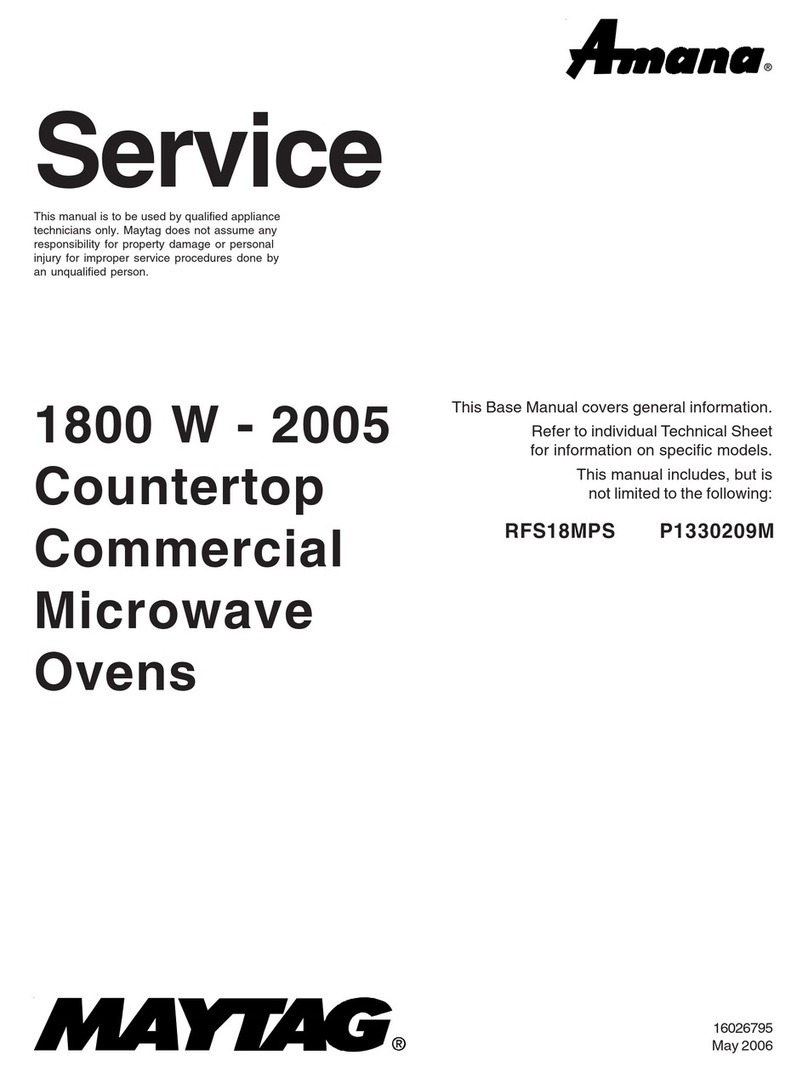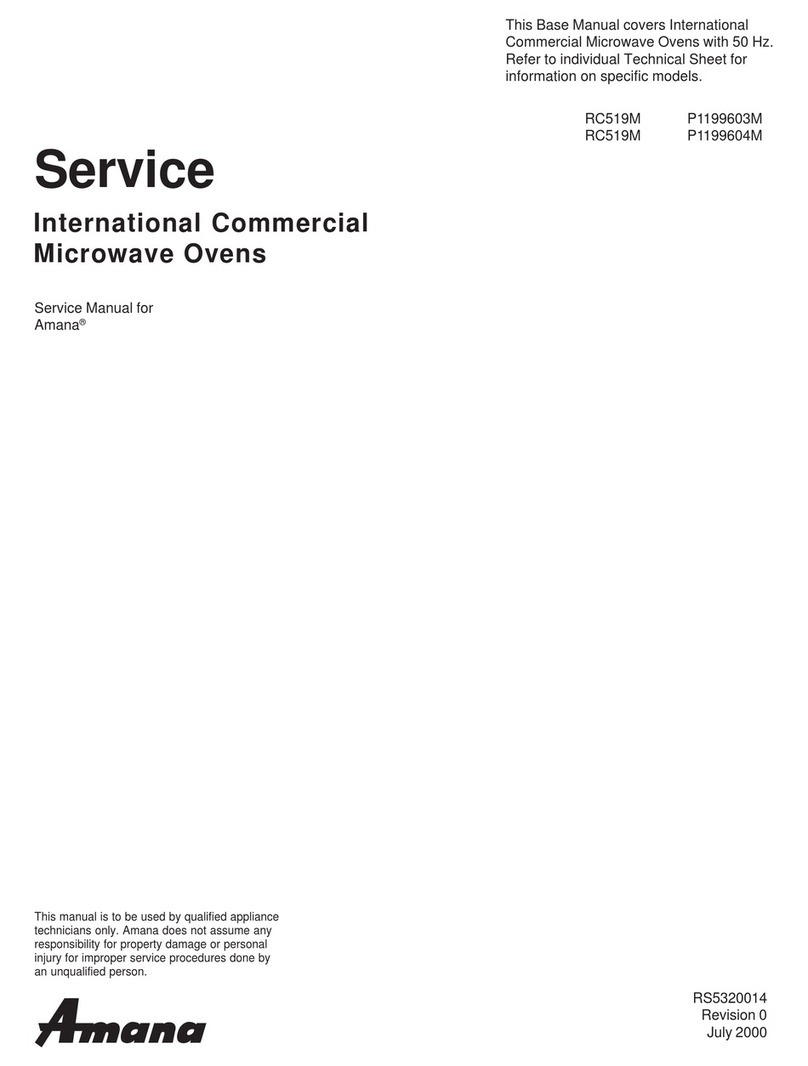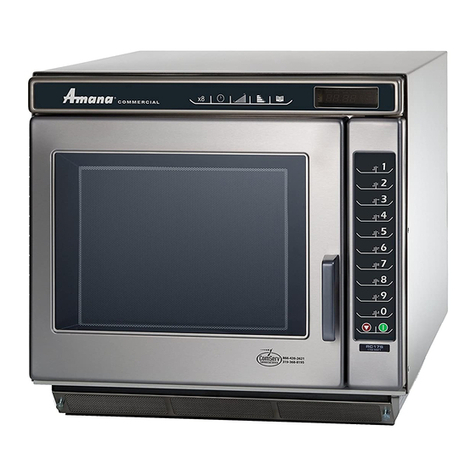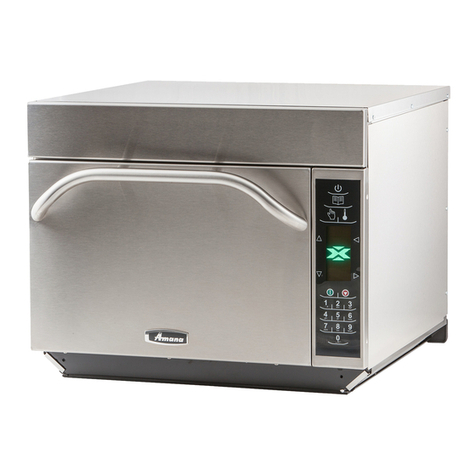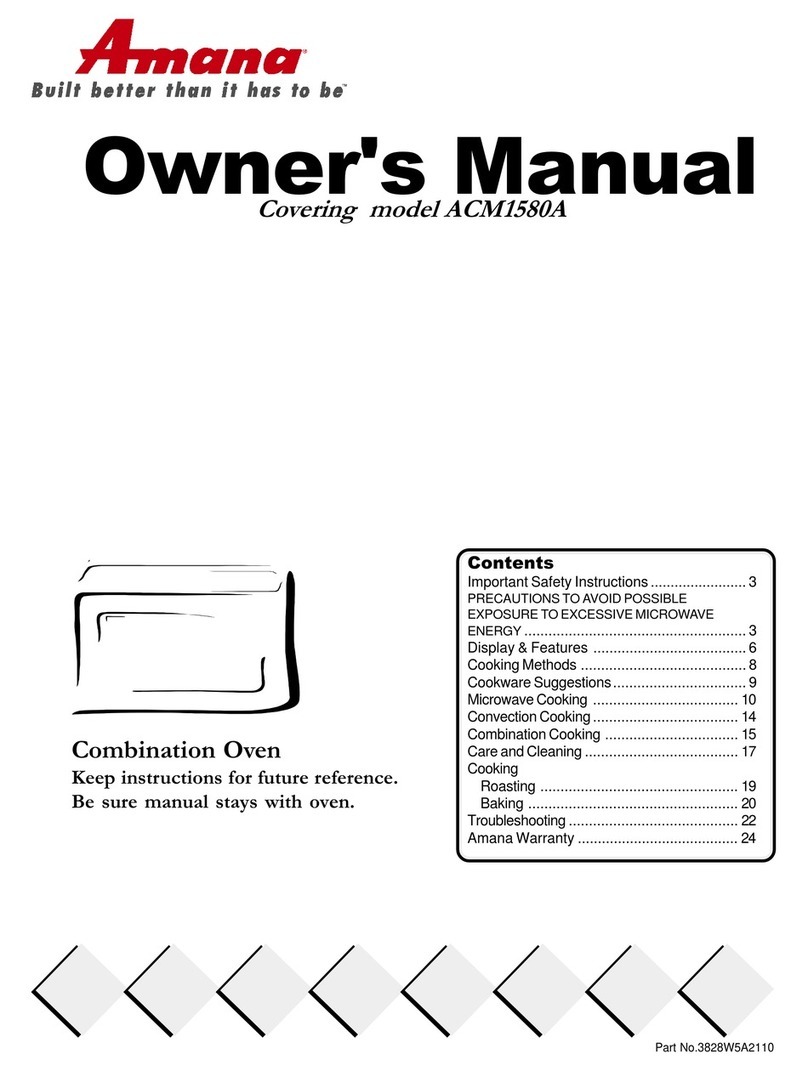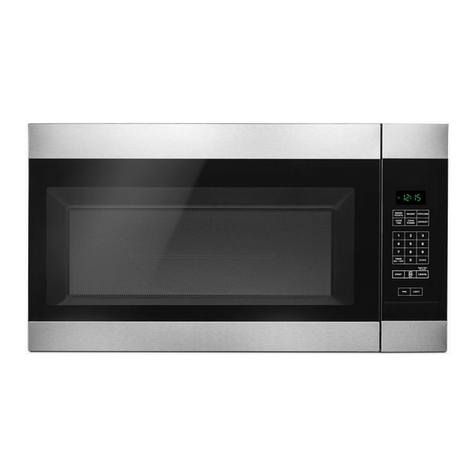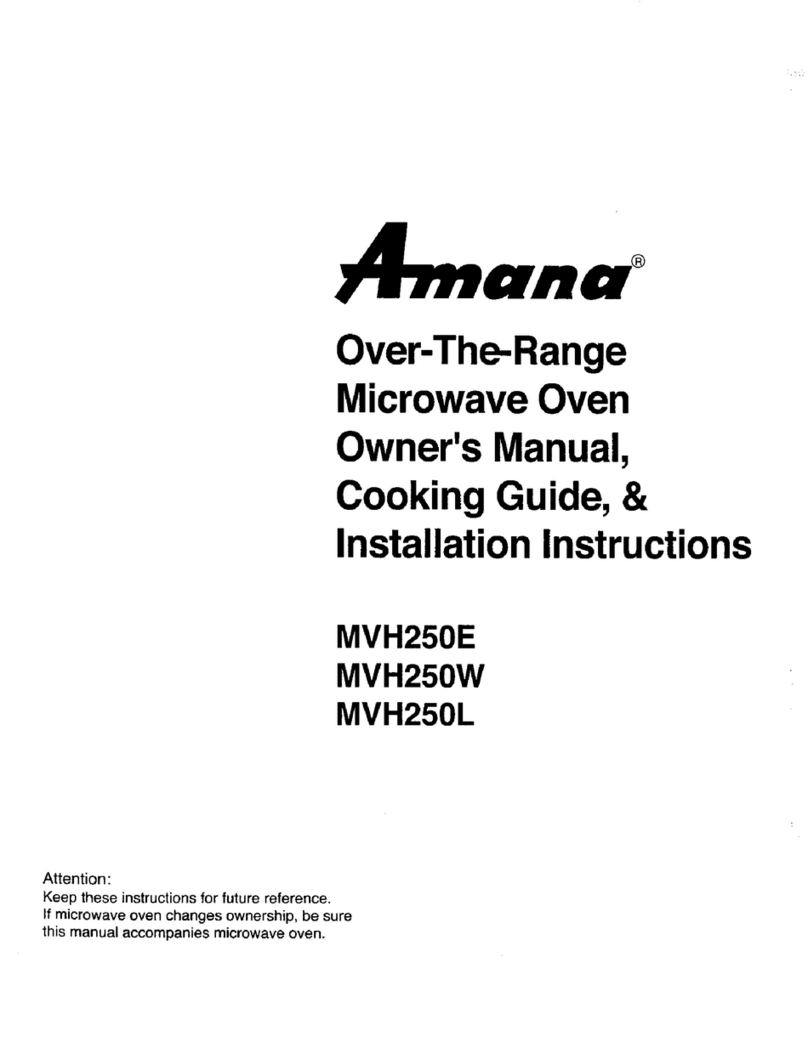- 4 -
SAVE THESE INSTRUCTIONS
IMPORTANT SAFETY INFORMATION
• Read all the instructions before using your oven.
• Do not allow children to use this oven without close
supervision.
• Read and follow the specific PRECAUTIONS TO AVOID
POSSIBLE EXPOSURE TO EXCESSIVE MICROWAVE
ENERGY found on page 3.
• Do not use corrosive chemicals or vapors, such as
sulfide and chloride, in this appliance. This type of oven is
specifically designed to heat, cook, or dry food. It is not
designed for industrial or laboratory use.
• Do not use or store this appliance outdoors.
Do not use this product near water - for example, near a
kitchen sink, in a wet basement, or near a swimming
pool, and the like.
• Do not use the cavity for storage purposes.
Do not leave paper products, cooking utensils, or food in
the cavity when not in use.
• Clean the ventilating hood frequently.
Do not allow grease to accumulate on the hood or the
filters.
• Use care when cleaning the vent hood filters. Corrosive
cleaning agents such as lye-based oven cleaners, may
damage the filters.
• Do not tamper with the built-in safety switches on the
oven door. The oven has several built-in safety switches
to make sure the power is off when the door is open.
• When flaming foods under the hood, turn the fan on.
• Suitable for use above both gas and electric cooking
equipment 36 inches wide or less.
• Do not use this oven for commercial purposes.
It is made for household use only.
• When cleaning the door and the surfaces that touch
the door, use only mild, non-abrasive soaps or
detergents and a sponge or soft cloth.
• If your oven is dropped or damaged, have it thoroughly
checked by a qualified service technician before using it
again.
• To avoid a fire hazard:
- Do not overcook food. Overcooked foods can start a
fire in the oven. Watch the oven carefully, especially if
you have paper, plastic, or other combustibles in the
oven.
- Do not store combustible items (bread, cookies,
etc.) in the oven.
- Do not use wire twist-ties in the oven. Be sure to
inspect purchased items for wire twist-ties and remove
them before placing the item in the oven.
• If a fire should start:
- Keep the oven door closed.
- Turn the oven off.
- Disconnect the power cord or shut off the power at
the fuse or circuit breaker panel.
• To avoid electric shock:
- This appliance must be grounded.
Connect it only to a properly grounded outlet.
See the electrical GROUNDING INSTRUCTIONS on
page 6.
- Do not operate this appliance if it has a damaged
cord or plug, if it is not working properly or if it has
been damaged or dropped.
- Do not immerse the electrical cord or plug in water.
- Keep the cord away from heated surfaces.
- Do not use extension cord.
• To avoid improperly cooking some foods.
- Do not heat any types of baby bottles or baby food.
Uneven heating may occur and possibly cause
personal injury.
- Do not heat small-necked containers, such as syrup
bottles.
- Do not deep-fat fry in your microwave oven.
- Do not attempt home canning in your microwave
oven.
- Do not heat the following items in the microwave
oven: whole eggs in the shell, water with oil or fat,
sealed containers, or closed glass jars. These items
may explode.
• Do not cover or block any openings in the oven.
• Use your oven only for the operations described in this
manual.
• Do not run the oven empty, without food in it.
• Do not let cord hang over edge of table or counter.
• Preserve the oven floor:
- Do not heat the oven floor excessively.
- Do not allow the gray film on special microwave-
cooking packages to touch the oven floor. Put the
package on a microwavable dish.
- Do not cook anything directly on the oven floor or
turntable. Use a microwavable dish.
- Keep a browning dish at least 3/16 inch above floor.
Carefully read and follow the instructions for the
browning dish. If you use a browning dish incorrectly,
you could damage the oven floor.
• Install or locate this appliance only in accordance with the
provided installation instructions.
• This appliance should be serviced only by qualified
service personnel. Contact the nearest authorized service
facility for examination, repair, or adjustment.
To reduce the risk of burns, electric shock, fire, injury to persons, or exposure to excessive microwave energy.
